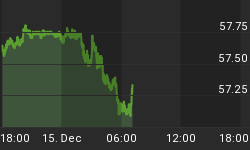The advanced report of the US Q2 GDP growth showed a 3.4% annual growth from 3.8% in Q4.
The report saw its largest positive contribution from improved exports (falling imports) (1.57%), but a slowing contribution from private investment (-0.84%), inventory accumulation (-2.32%) and consumer expenditure (2.3%). Without the negative inventory accumulation, final sales GDP growth rose 5.8%, the highest since Q1 2000. As disconcerting as the 0.84% drop in private investments, the upside to that is an eventual rebound when companies would have to rebuild inventories, resuscitate production and rejuvenate new employment payrolls.
There was also good news for the Fed as core PCE prices slowed to 2.0% from 2.0%, showing that inflation has slowed towards the central bank's central tendency forecast range of 1.75%-2.0%.
But is the improvement in next exports (exports - imports) durable? The 1.57% positive contribution of net exports to GDP is the highest since Q4 1996 when it stood at 2.06%. We know that the trade portion emerged from the April and May trade deficit figures, which showed a 6% increase followed by a 3% decrease respectively. We noted in the May trade report that: "considering the improvement in the trade figure, some economists may rush to provide bullish preliminary forecasts for Q2 GDP. But there is a strong likelihood that the 14% backup in oil prices in May and June will push back up oil imports towards the $14 billion mark. This could fuel the deficit towards the $58 billion territory, especially if US exports remain at their lackluster pace."
If the June trade figures do show a rebound to the $58-60 billion territory and the inventory build up fails to ensue, then we could see the1.57% contribution from trade be cut by more than half, which could drag real GDP growth to about 3.0%, the weakest since Q1 2003.

Dollar Exhaustion?
The dollar fell across the board after the GDP report came in close to the 3.5% consensus forecast. Most strikingly is the dollar's muted response to the stellar Chicago PMI report, which showed a 10 point rise to 63.5 in July, overshooting consensus expectations of 55.0.
The euro rose from $1.2090 before the GDP figure to $1.2145, shrugging the strong PMI report. USDJPY lost half a yen to 111.95.
Indeed, the dollar has exhibited signs of exhaustion. On Wednesday, the US currency sustained a bout of selling despite the best durable goods orders report in 3 years. On Thursday, the greenback fell flat on its back under fresh selling despite negative euro comments from Italy and political uncertainty in Japan. The lack of negative fundamental news on the dollar in the midst of these systemic dollar sales at the end the European trading session could be a reflection of an exhausted dollar bull run or the emergence of a new assessment in the aftermath of last week's revaluation of the renminbi.
The decision by the People's Bank of China to peg its currency against additional currencies to the US dollar could mean less of a binary assessment of the US currency and more of a protracted interest in currencies such as the euro, pound and Aussie.
Most interestingly, the dollar sell-off following an improved assessment in the US economy by the Fed's Beige Book survey means that traders may not necessarily be ready to further reward the currency based on strengthening chances of additional interest rate hikes.

















